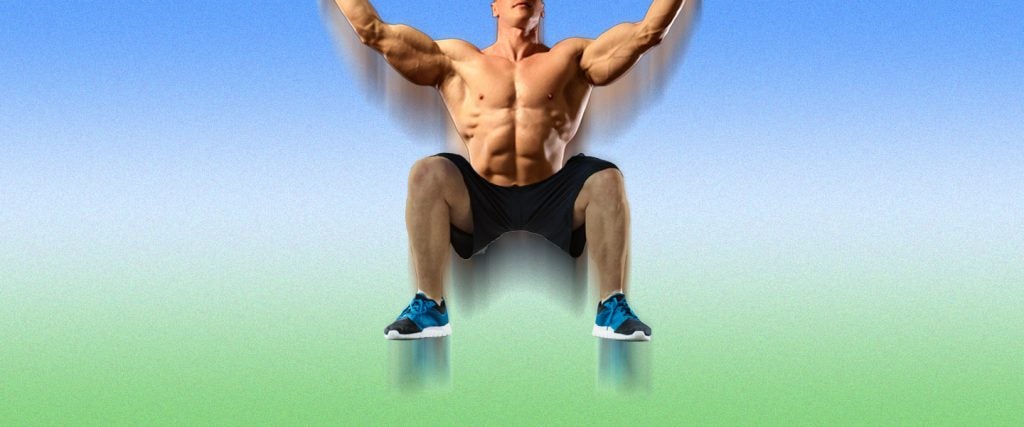Despite what the red ribbon I earned in the high-jump competition of my middle school’s track and field championship might suggest, I was never a gifted jumper. For years, I presumed that my inability to grab air had been genetically predetermined, and that blame for my sky-hopping shortcomings could be pinned squarely on the crummy DNA that my parents had passed down to me. But that was before I began training regularly in the weight room, and I started to hear things like, “You need to do more squats so that you can get some ups!” (Yes, the kids in my era referred to jumping ability as “having ups.”)
But was that at all true? Could I have overridden the portion of my genetic code that left me earthbound simply by hoisting a bar on my shoulders and squatting it off the ground enough times?
I’ve heard the same thing. Will doing enough squats help me to jump higher?
The short answer is yes, doing squats will help you to jump higher. In a study measuring jumping performance improvements after eight weeks of specialized training, athletes who squatted improved their jumping by an average of 12.4 percent. This was in contrast to athletes whose lower-body training consisted principally of leg presses, and whose vertical jumps improved by a comparatively minuscule average of 3.5 percent.
Additional studies further demonstrated that an individual’s maximum squat strength correlated strongly and directly with the maximum height they could reach through leaping, and also that the maximum depth that trainees reached with their squats also factored into their ability to reach greater heights than those who opted for shallower squats.
So it sounds like it’s “case closed.”
Probably, but we’re going to leave the case open for just a little while longer. I’d be remiss if we didn’t explore the workouts of the folks whose livelihoods are partially dependent, if not wholly dependent, upon the development of world-class leaping ability.
If you dissect the exercise routines of some of the world’s best high jumpers, you’ll notice that squats are obviously present in their training programs, along with several other leg exercises, like walking lunges and power cleans. However, a few other elements are also noticeable, starting with explosive squats of fully loaded bars at very shallow depths. This makes sense, since the explosiveness of most competitive jumps is delivered at a very precise moment through a specific recruitment of muscles, and not through an actual squatting motion — i.e., you’ve never seen LeBron James squat low to the ground before he attacks the basket. In other words, the jumpers are training the muscles involved in producing the jump through heavy resistance applied at the exact instant when the jump occurs.
Okay. Case closed now?
Don’t worry, I’m almost ready to wrap it up.
In 1888, track-and-field legend William Byrd Page provided an explanation to The Courier Journal of Louisville, Kentucky, of what helped him achieve an amateur world championship in the high jump. His recipe for success consisted of a cross-training regimen of bicycling, brisk walking and then set days of standard jumping — all coupled with a lifestyle that eschewed junk food and smoking.
Although Page’s era predated our era of specialized training, the spirit of his prescription remains correct. If you want to be a good jumper, it’s best to be broadly conditioned and also to practice jumping on its own. Squatting regularly may help to improve your jumping performance by 12.4 percent, but the squat must be only a small cog in a comprehensive fitness plan. After all, the less weight that your legs are obligated to propel upwards, the higher you will ultimately be able to soar.

